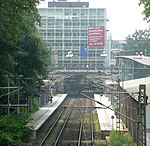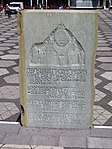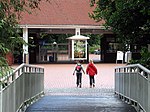Westfalenhallen

Westfalenhallen (English: Halls of Westphalia) is a commercial complex composed of conference (Kongresszentrum Dortmund) and exhibition centers (Messe Dortmund) with an indoor arena (Westfalenhalle), located in Dortmund, Germany. It is surrounded by the Eissportzentrum Westfalenhallen, Stadion Rote Erde, Signal Iduna Park and Helmut-Körnig-Halle. The original building was opened in 1925, but was destroyed during World War II. Reopening on 2 February 1952, new halls were built, the "Große Westfalenhalle". The "Kleine Westfalenhalle" served also for balls, exhibitions and concerts, such as the Dortmunder Philharmoniker, until the Opernhaus Dortmund was opened in 1966. The Bundesliga was founded at the Westfalenhallen in 1962.
Excerpt from the Wikipedia article Westfalenhallen (License: CC BY-SA 3.0, Authors, Images).Westfalenhallen
Strobelallee, Dortmund Innenstadt West
Geographical coordinates (GPS) Address Website External links Nearby Places Show on map
Geographical coordinates (GPS)
| Latitude | Longitude |
|---|---|
| N 51.496388888889 ° | E 7.4558333333333 ° |
Address
Westfalenhallen Dortmund
Strobelallee 45
44139 Dortmund, Innenstadt West
North Rhine-Westphalia, Germany
Open on Google Maps









